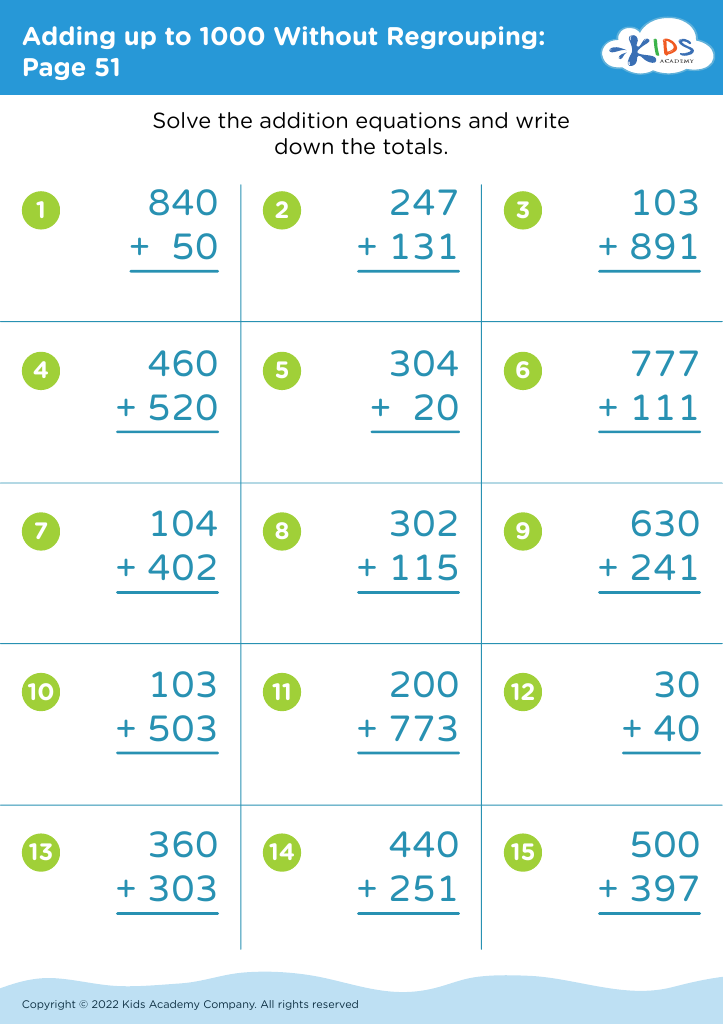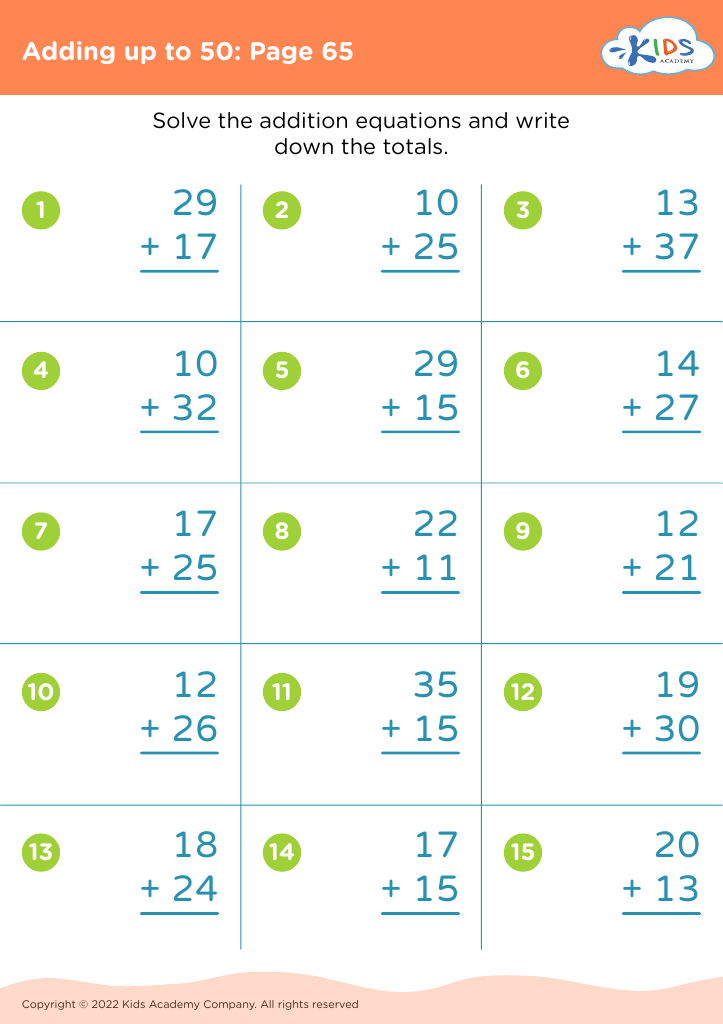Understanding number relationships Worksheets for Ages 7-8
5 filtered results
-
From - To
Explore our comprehensive "Understanding Number Relationships Worksheets" tailored for ages 7-8! These worksheets are designed to foster foundational math skills through engaging activities that help children grasp essential concepts such as addition, subtraction, and number patterns. By challenging young learners to recognize relationships between numbers, our worksheets promote critical thinking and problem-solving abilities. Each worksheet is easy to use, making it perfect for parents and educators looking to enhance math understanding at home or in the classroom. Start your child's journey toward math proficiency and confidence with fun, interactive exercises that make learning enjoyable today!
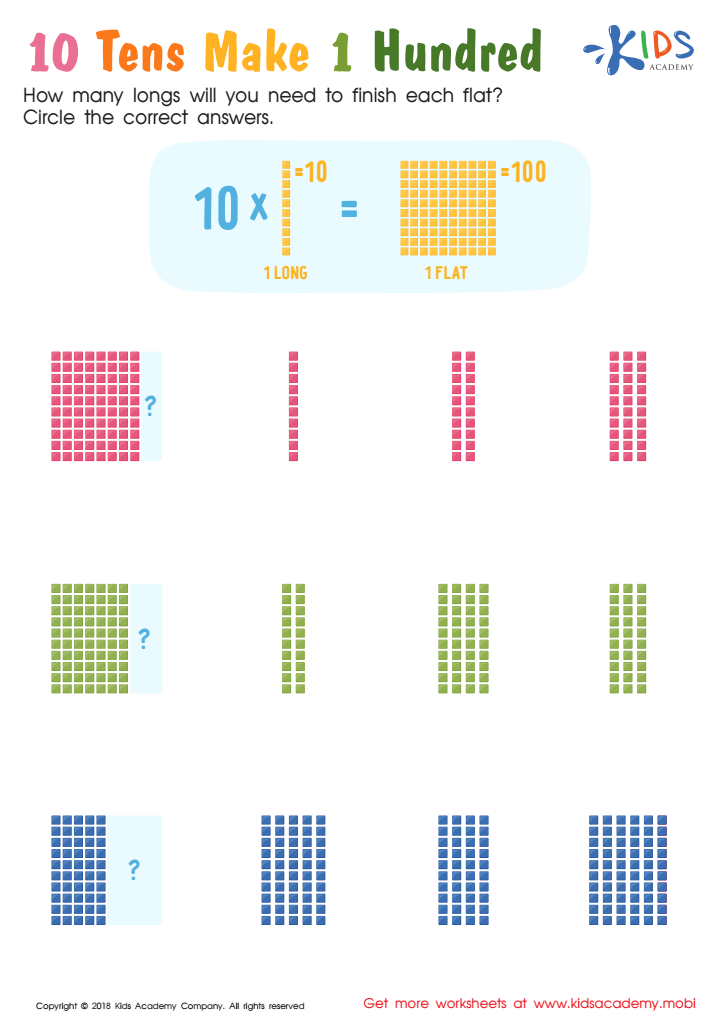

10 Tens Make 1 Hundred Worksheet
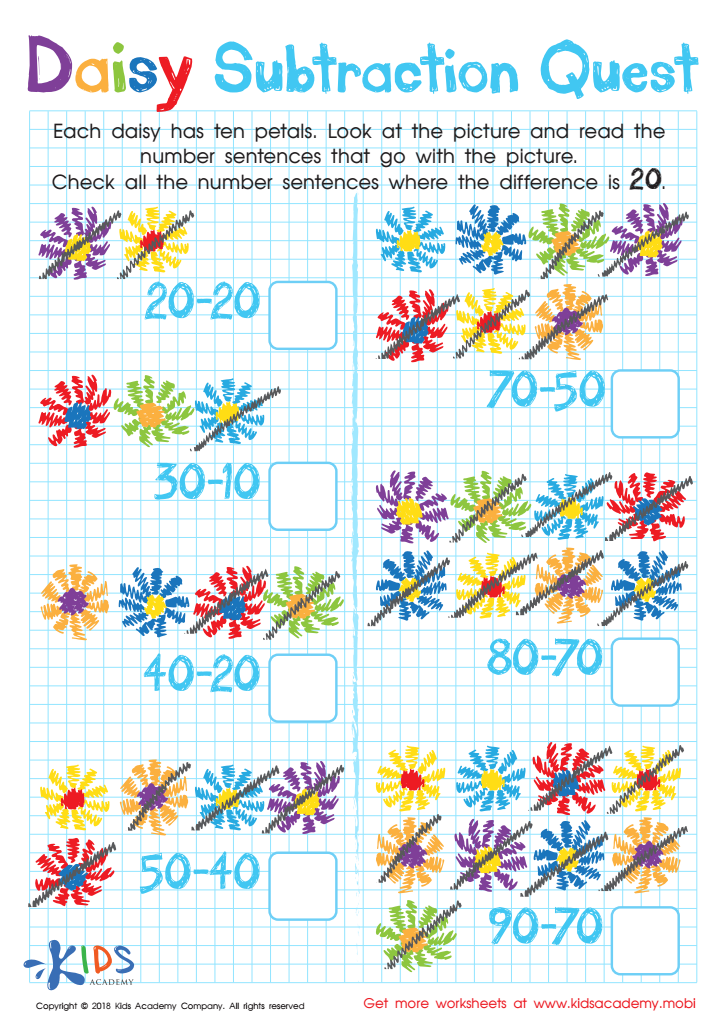

Daisy Subtraction Quest Worksheet
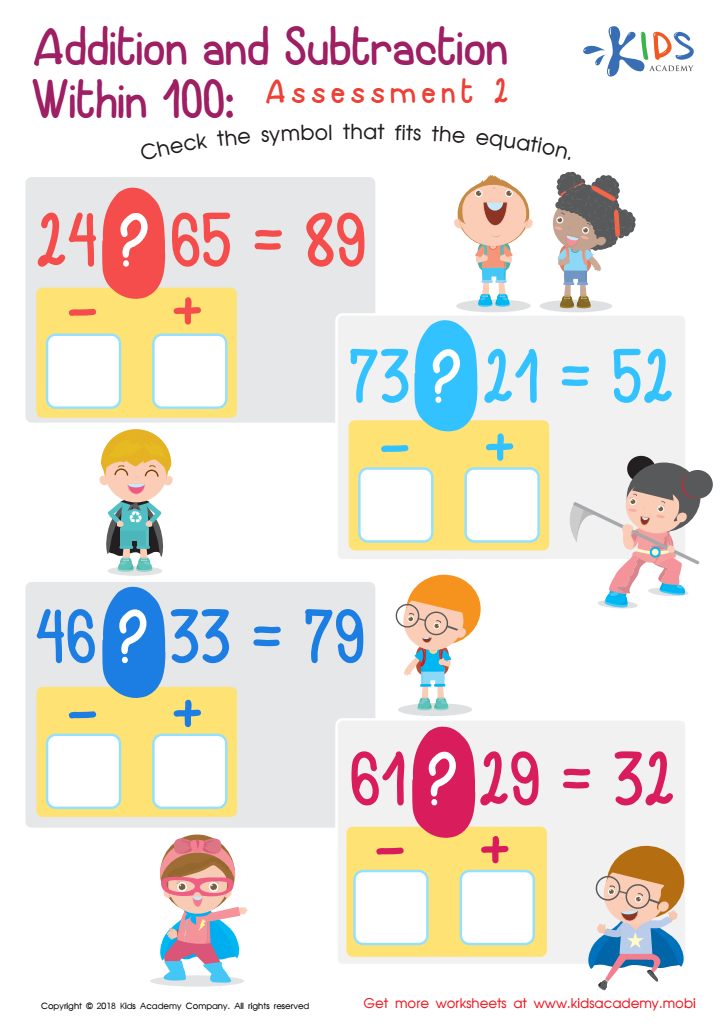

Addition and Subtraction Within 1: Assessment 2 Worksheet
Understanding number relationships is crucial for children aged 7-8 as it lays the foundation for their mathematical development. At this age, students begin to transition from basic arithmetic to more complex mathematical concepts. Grasping number relationships helps them understand how numbers interact, which is essential for problem-solving. This comprehension extends beyond mere calculations, enabling students to explore patterns, equivalences, and the concept of place value.
Parents and teachers should care about this because strong number sense plays a significant role in a child's confidence and performance in mathematics as they progress to higher grade levels. When children recognize relationships between numbers—such as how doubling a number interacts with addition or understanding fractions as parts of a whole—they become adept thinkers, able to tackle more complex mathematical operations.
Additionally, fostering this understanding aids children in developing critical thinking and logical reasoning skills that are applicable across subjects and real-life situations. Engaging in activities that promote number relationships, such as games and collaborative problem-solving tasks, not only makes learning enjoyable but also strengthens these essential skills. Ultimately, supporting children in understanding number relationships prepares them for academic success and equips them for challenges beyond the classroom.
 Assign to My Students
Assign to My Students
